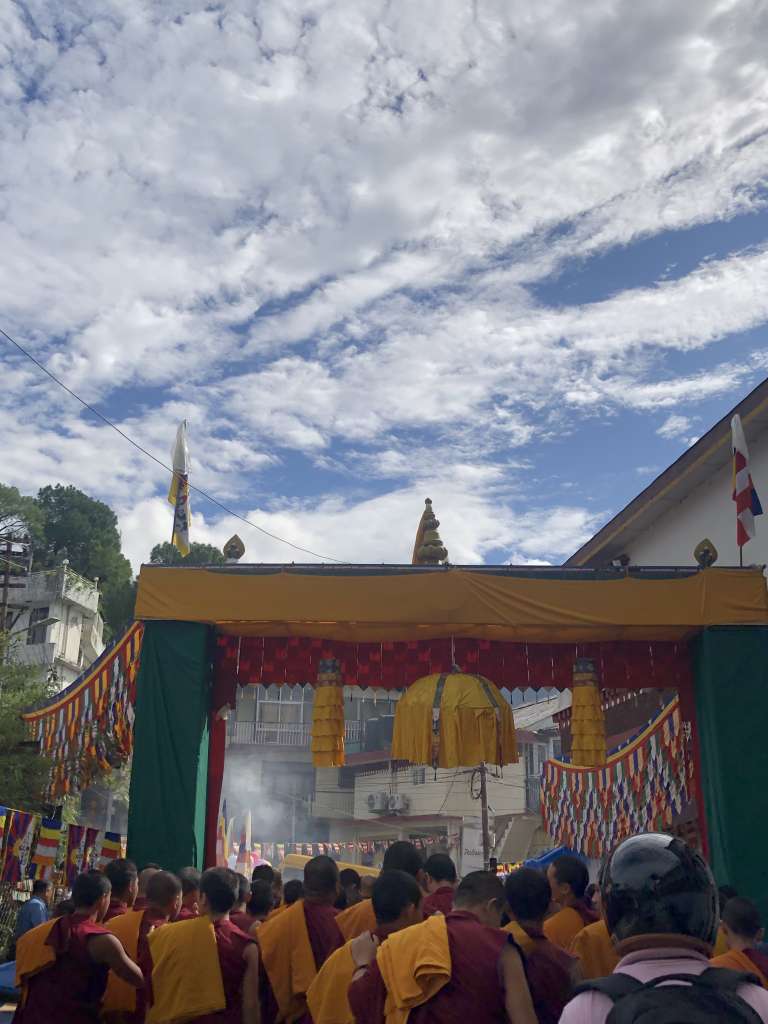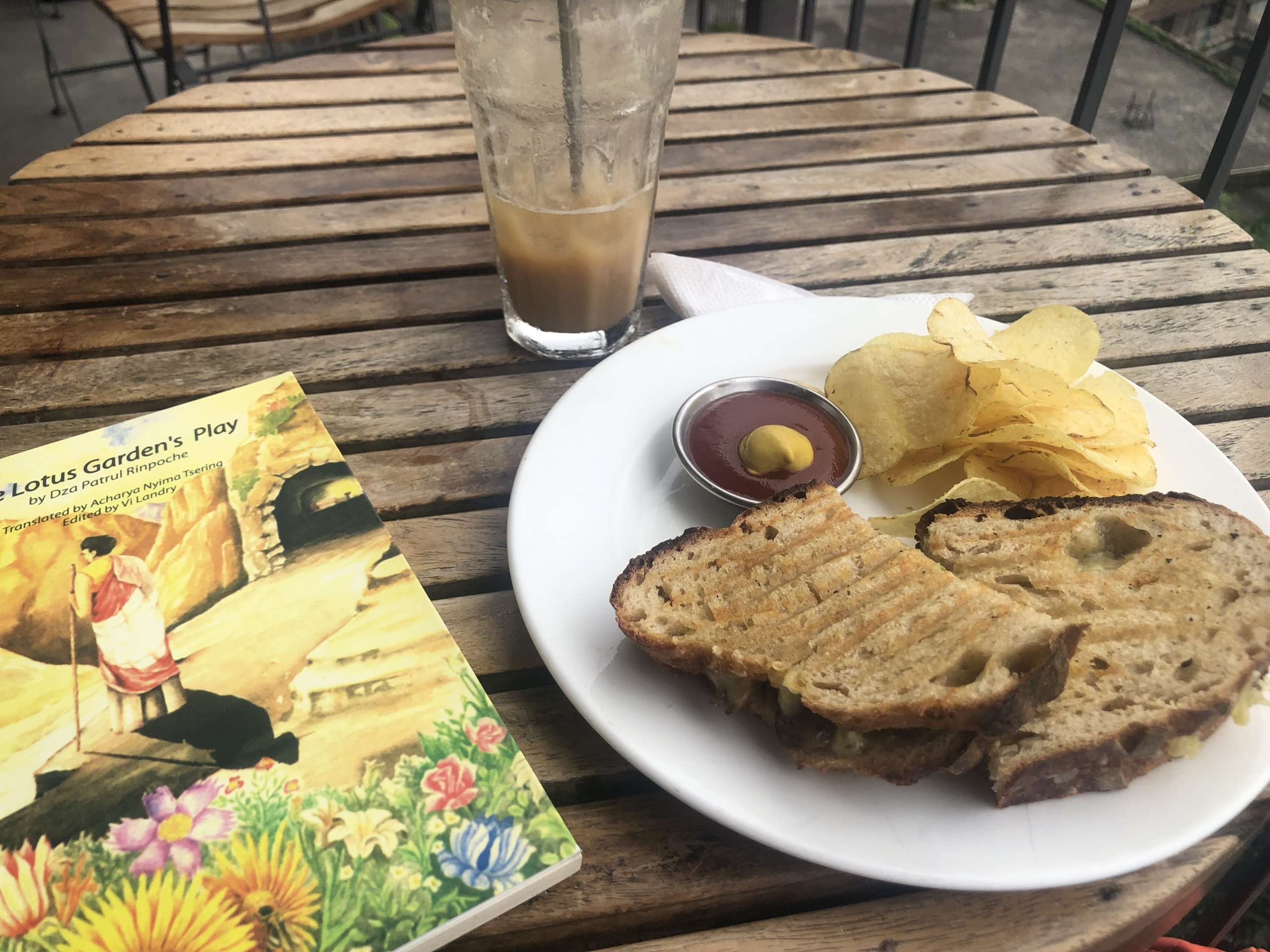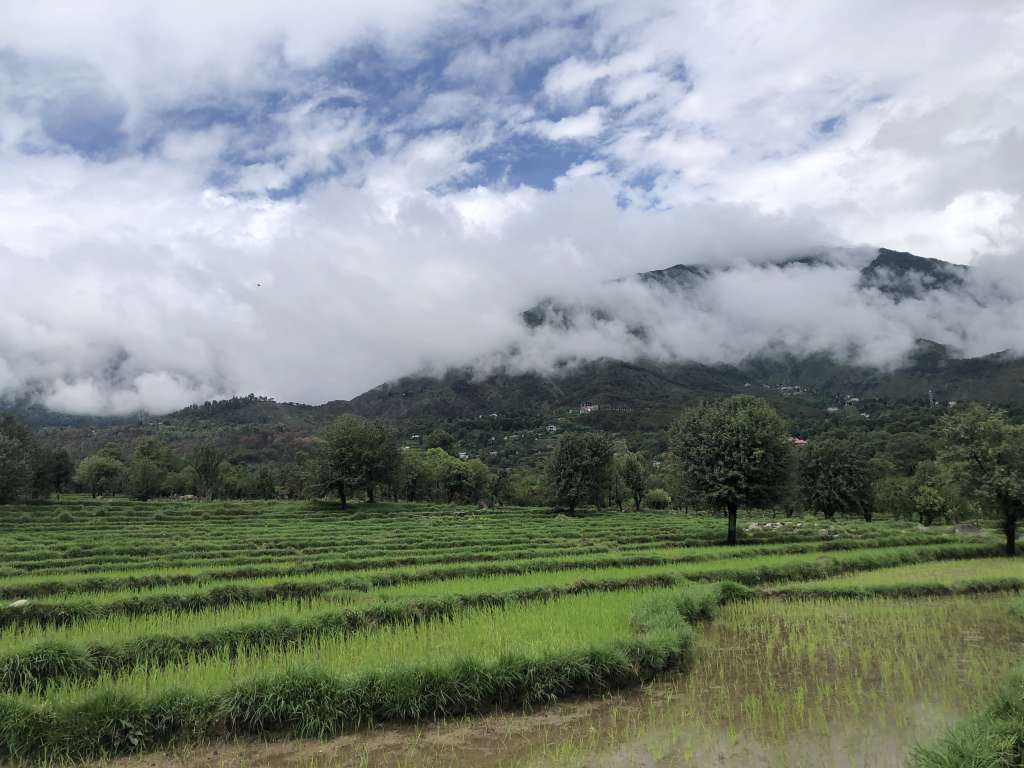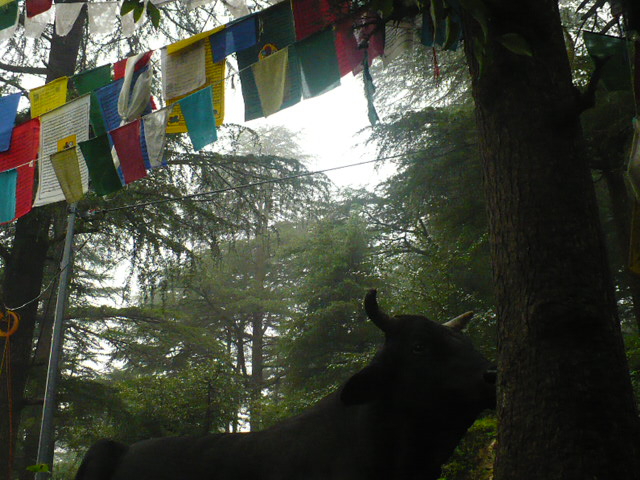The time has come to write a little about Dharamsala—the place where I spent the majority of my journey, and where I received immense blessings and deep teachings that have shaped the later part of my pilgrimage. I am forever grateful for everything that happened there. Being in the presence of His Holiness the Dalai Lama is an experience that will likely remain etched in my memory until end of my days.

Reaching Dharamsala is fairly easy. Comfortable night buses run frequently from Delhi cities, and there are also regular flights to Kangra Airport, followed by a short taxi ride (less than an hour) to Dharamsala itself.
Once there, you’ll find an incredible mix of people—Tibetans living in exile, pilgrims from across the globe, curious travelers, and Indian families enjoying holidays. It’s a vibrant, colorful place where Tibetan and Indian cultures gracefully intertwine.
This is where I first arrived. Why? Because I was about to begin a one-year Buddhist Philosophy course at the Library of Tibetan Works & Archives—a program I was incredibly excited about. A friend had told me about this opportunity, and it felt like the perfect fit. It also allowed me to apply for a student visa, valid for an entire year.

Looking back, it was a soft and welcoming introduction to India. Not overwhelming, but still lively enough to experience a taste of that famous Indian chaos—fascinating and oddly functional. For instance, riding a local bus was an adventure in itself. On the roads, you’d see cows lounging, buffaloes resting, dogs darting, people shouting, cars rushing, and the bus just gliding through it all—never really slowing down, yet somehow navigating it effortlessly.
How to take a local bus in India?
Whether there’s an official stop or not doesn’t make much difference. Just wave your hand to signal you’d like to board.
Tell the conductor your destination and ask him to stop there. If that bus doesn’t go your way, ask the next one. It’s always helpful—and sometimes necessary—to ask locals for assistance. In most cases, people will understand at least a little English, and in my experience, they’re more than willing to help.
Dharamsala is also very welcoming to foreigners. Locals are accustomed to the presence of Western visitors, and the town has plenty of cafés and restaurants catering to international tastes. My favorite? The Other Space—a beautiful spot to relax, meet others, and enjoy great food.


I arrived at the end of the dry season, just as mango season was in full swing. It was blissful to feel the Indian sun warming my skin while eating fresh, juicy mangoes, with the view of mountains and rice fields stretching in front of me.

But let me also be honest about the emotional side of things.
At first, despite my excitement, I felt anxious and overwhelmed. I had left my job, my studies, and everything familiar to leap into the unknown. It was a personal risk—but I jumped, eyes closed, trusting that Mother India would guide me… and she did.
What I want to say is: give yourself time to adjust, especially if you’re embarking on long-term travel.
Your body and emotions need space to catch up. Be gentle. Start slowly. Cry if you need to. Make room for it.
But most importantly—don’t forget your purpose. Stay curious.

Finding a Room in Dharamsala
There are a few ways to look for a room:
1.Through friends or word-of-mouth
2.Through Facebook groups
3.On rental websites
4.By asking in local cafés, shops, or restaurants—often they know someone renting a room
A standard room will typically include a kitchen and bathroom, but you should be prepared for some mold issues—a common problem in this region due to humidity. Prices range from ₹4,000 to ₹8,000 depending on location and condition.
Dharamsala is essentially divided into two main areas:
•Lower Dharamsala – home to markets, tea and rice fields, Norbulingka Institute (Tibetan art centre), and other city infrastructure. From here, you need to take a jeep, bus, or taxi to reach McLeod Ganj.
•McLeod Ganj – the residence of His Holiness the Dalai Lama, and the heart of the Tibetan community. Here you’ll find the main temple, cafés and restaurants, Tibetan administrative offices, clinics, and craft shops.

Rooms in McLeod Ganj are often more expensive but also more likely to be mold-free. Average prices range from ₹10,000 to ₹20,000.
You can also explore rooms in nearby villages like Dharamkot, Bhagsu, Naddi, Heru, or Gamru—each with its own charm and community.
This is only the beginning of my Dharamsala impressions.
There is still so much more to share—about the teachings, the people, the inner journeys, and the beauty of living in a place where spirituality is part of everyday life.
Stay tuned. The story continues.
Marta Pema Yudrön


13 Comments
Comments are closed.